By Teofilo Ruiz
June 14th 2012
After more than half a century and many unfulfilled promises, I traveled to Cuba in late February 2012. Having left the island in October 1961, I could not (or would not) return in the early years because of threats to my freedom. Later, restrictions imposed by the Cuban government on Cubans wishing to visit the island kept me away. Finally, already old, I continually reminded myself of how much I needed to take this journey. Yet, always at the very last moment, some other voyage beckoned, and again I postponed and/or delayed the trip, even though Scarlett would remind me that it was time for both of us to travel to Cuba. If I resisted my return, it was because I fully understood the psychological impact of such a re-encounter with my lost youth, and feared the possible erasure of carefully nurtured memories of my early life, of places, people, and events.
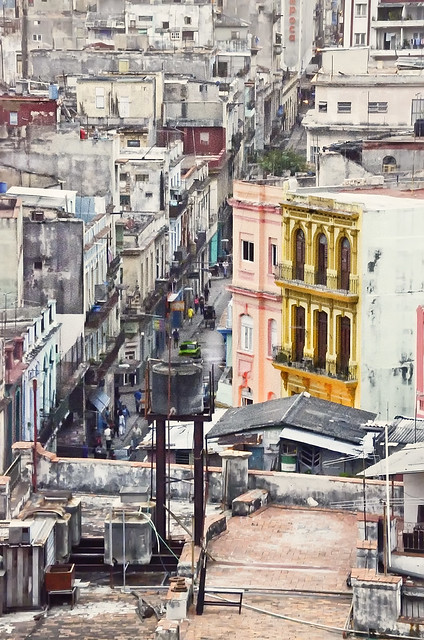
I left Cuba close to my nineteenth birthday. I was already an adult, filled with experiences of San Francisco de Paula, my small hometown a mere ten kilometers from the center of La Habana — and of the capital city itself, the magical and enchanting La Habana of my early years. I kept a mental map, an intellectual and emotional topography of remembered places. This mental map lived in my mind, a vivid remembrance of things that were no more. In the fifty years since I left Cuba, I have walked my town and La Habana endless times, reaffirming memories of streets, houses, parks, smells, and people. And although I have lived in many different places in the world and have felt somewhat at home almost everywhere, both my hometown and La Habana remained engraved in nostalgic memories, deeply alive in me, even though part of me realized that they had no objective existence anywhere else. I dreamed of them, longed for them, and waited in vain.
During the academic year 1979-80, I lived in Madrid with my family for a year. I was there in principle to do research in Spain’s National Archives, but the real reason was to find out whether I could relocate to Europe and find a closer sense of belonging somewhere. During that year, I did not feel fully at home there either, but I read a novel by a Cuban writer, Guillermo Cabrera Infante, that had a tremendous impact on me. The novel, La Habana para un Infante Difunto (a play of words on the author’s name and the death of adolescence), evoked La Habana, precisely during the time period when I had lost the city myself. I wrote to Cabrera Infante thanking him for allowing me to recover the city. And, indeed, my reaction to thebook showed me that if I had a home, it was in La Habana.
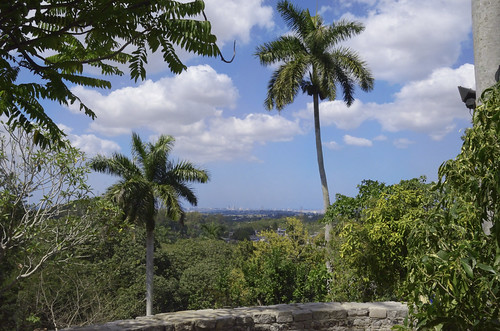
In 1959 (partly the chronological setting of Cabrera Infante’s novel), that intoxicating first year of the Cuban revolution — intoxicating to me who identified then and still do to some extent with some of the social ideals of the revolution — La Habana was a luminous city, a city caressed by the sea, filled with color, energy, and music. It was a city where I had my first sexual experiences and where I learned to read, to think; where I was formed intellectually and emotionally. In San Francisco de Paula, living across the street from Hemingway’s house, I could see La Habana in the distance from his porch.
 While I knew every street, every house and tree in my intensely green and sensuous hometown, I also knew intimately all the urban landmarks, old and new, that made La Habana one of the most beautiful cities in the world. My maternal grandmother’s house was located in one of La Habana’s residential neighborhoods. My aunts moved to the city after my paternal grandmother’s death. Their apartment was located in the shadows of the university’s grandiose stairs, steps from the Malecón, the long seawall that is La Habana’s living room.
While I knew every street, every house and tree in my intensely green and sensuous hometown, I also knew intimately all the urban landmarks, old and new, that made La Habana one of the most beautiful cities in the world. My maternal grandmother’s house was located in one of La Habana’s residential neighborhoods. My aunts moved to the city after my paternal grandmother’s death. Their apartment was located in the shadows of the university’s grandiose stairs, steps from the Malecón, the long seawall that is La Habana’s living room.
In La Habana there were movie houses (I saw The 400 Blows at the Rex movie house, named after the Parisian landmark), the baseball stadium, the bookstores on the streets of Obispo and O’Reilly. There were the cafes where my father often took me to hear literary discussions. I sat in silence and awe as the latest Camus novel, just arrived from Paris, was discussed; or as Lezama Lima, who wrote Cuba’s greatest novel, Paradiso, held court at those mid-day literary tertulias. La Habana was also the place of great bars, of brothels, of endless music, of santería and African rituals.
By bike or by bus, my young friends and I made our way to La Habana, where everything was exciting, where the sea breezes tempered the tropical heat. But of the life left behind, what I missed most was the banter, the rhetorical skirmishes, the physicality of La Habana and its people, the embracing of friends, old or newly met. How then to return to things that live only in memory? How to confront a reality that exists only in the mind? How to bear the psychic pain of memories completely or partly erased by the passage of more than half a century, by years of neglect?
Although Scarlett pleaded that we should go to Cuba on our own, I was not sure that I was strong enough to do so. In the end, I was offered the opportunity to represent UCLA in an Alumni trip to the island. The decision to do so proved correct. The group was pleasingly progressive and sympathetic to the plight of Cubans and understanding of what I faced and felt about my return.
Arriving on the evening of 28 February, we drove in a tour bus from the airport to a well-appointed hotel in the center of the city, right on the edge of Old La Habana and across from the former commercial center of the city in the 1940s and 1950s. The bus rode through dimly lit streets. The people on the sidewalks or crossing the streets were barely visible. They appeared, in a play of shifting shadows, like phantasmagorical figures, like ghosts. And then we arrived at the hotel, half-owned and administered by a Spanish company, a vivid reminder of the two Cubas that uneasily co-exist today. One reality: a hotel filled with Canadians, Europeans, Americans. They exchange their currency into Cuban convertible currency, eating, and drinking in La Habana, as they would in any other capital in the world. The other reality: a hotel in which all the service people — maids, security, bartenders, porters, and the like — are exclusively Cuban, many of them highly educated, working for tips in hard currency. Inside, we tourists ate as we would at home, or in Paris or London. Outside, it was a very different story. For those who have no access to the tourist economy, who function in the peso economy, there are no frills. Life is hard. When Scarlett and I walked through the Paseo del Prado for a few minutes after dinner that first night, the darkness enveloped us. A few shadowy figures sat on the benches along the nineteenth-century, once stylish promenade. I remember it as a vibrant pedestrian thoroughfare, filled with families, well lit. Businesses on the Paseo del Prado were always crowded with people. Now there was mostly darkness. Almost all the stores were closed or in ruins.
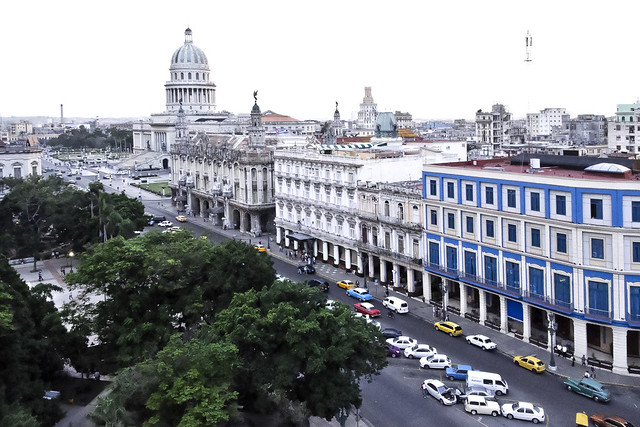
The group’s program was tightly regulated. We marched the first day through streets restored with UNESCO funds, visiting the colonial sections of the city, landmarks that I had known as parts of a living city but now had become tourist destinations. I recognized all of them, remembered all of them; yet, they belonged now to a different and transformed world, showplaces for tourists, structures turned into museums, repositories of a distant past, or of the Revolution’s achievements. We ate in pleasant restaurants, managed either by the state or by the new entrepreneurial owners of paladares, an example of Cuba’s experiment with a mixed economy. These places were open only to those with CUC’s, Cuba’s new tourist currency. Cubans were there as well, as long as they had access to CUC’s. There was, as I mentioned before, another La Habana, where you paid with pesos. That world we saw sometimes in passing, but did not experience.
These early glimpses of La Habana, disturbing and depressing, did not prepare me for the shock of seeing my hometown. After a visit to Hemingway’s house, Scarlett and I remained in San Francisco de Paula while the group went back to La Habana.
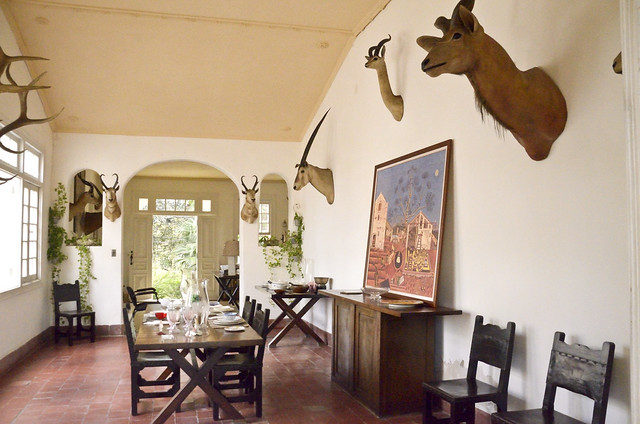

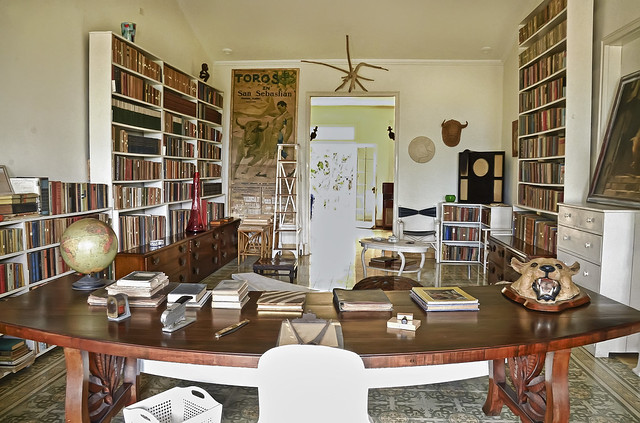
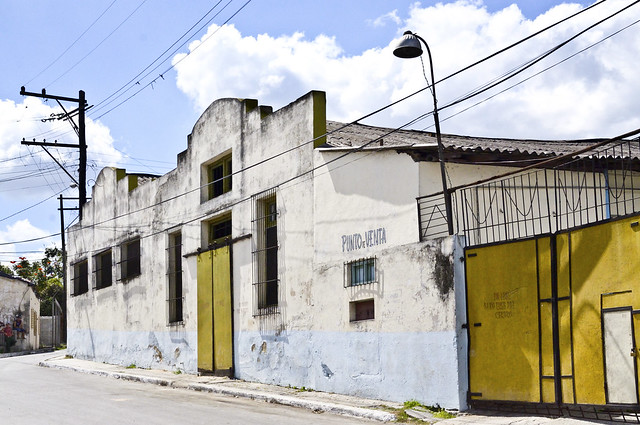 We walked my hometown in a short pilgrimage to the three houses where I had lived, my grandmother’s house, my father’s former factory, and the church. Although the three houses where I had lived appeared quite unchanged on the outside and had been well preserved, most of the rest of the town lay in ruins. All the former markets, the restaurants, and the cafes were either closed or had vanished. The pharmacy, formerly a beautiful early twentieth-century building, was empty and in ruins.
We walked my hometown in a short pilgrimage to the three houses where I had lived, my grandmother’s house, my father’s former factory, and the church. Although the three houses where I had lived appeared quite unchanged on the outside and had been well preserved, most of the rest of the town lay in ruins. All the former markets, the restaurants, and the cafes were either closed or had vanished. The pharmacy, formerly a beautiful early twentieth-century building, was empty and in ruins.
 I thought of a book that I had read in Cuba in my youth, by the count of Volnay, The Ruins of Palmyra, and felt the indescribable sadness of contemplating the collapse of my memories. And it wasn’t only the deterioration of buildings, or the gutted streets that made me despair; it was also the scale. Even though I had left as an adult, everything seemed so small. My grandmother’s sumptuous house, or what I remembered as grandiose, was a small and decrepit place; so were most of the other buildings.
I thought of a book that I had read in Cuba in my youth, by the count of Volnay, The Ruins of Palmyra, and felt the indescribable sadness of contemplating the collapse of my memories. And it wasn’t only the deterioration of buildings, or the gutted streets that made me despair; it was also the scale. Even though I had left as an adult, everything seemed so small. My grandmother’s sumptuous house, or what I remembered as grandiose, was a small and decrepit place; so were most of the other buildings.
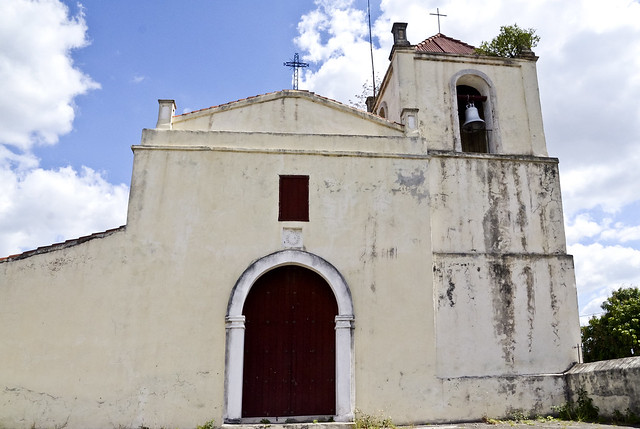

My experience of San Francisco de Paula was replicated in a lesser key on our visit to my maternal grandmother’s house, the place where my mother grew up. My cousin lives there now, and the house has been rebuilt anew. Only the location remains, a place now bereft of memories.
In retrospect, writing these pages two weeks after my return, it’s not as if all remembrances of my past were erased, though then, as I walked my town, this was precisely what I felt. Rather, I have two distinct memories: of things as they once were, and of things as they are now. These memories confront each other in uneasy relation. I dream of my past and of the present. But that day, 1 March 2012, what I desperately wanted was to leave. We took a vintage 1959 Mercedes Benz taxi back to the old part of La Habana, and the sight of the city, as we sat in a café and drank beer in the cathedral square, was soothing.

In a taxi ride from there to the restaurant in the Malecón where I was meeting the rest of the family for dinner, we traversed dark streets where, once again, ghostly figures appeared in the dim lights of the cab’s headlights. Streets where I had walked many times, streets of bustling commerce and nightlife, were shadows of their former selves.
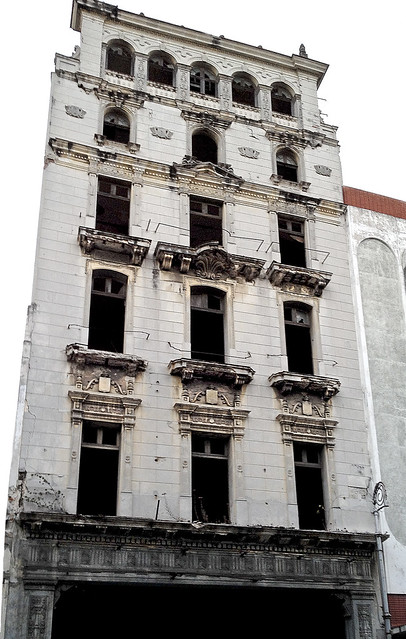 And in the next days, walking down the streets of Neptuno, Galiano, and San Rafael, the epicenter of La Habana’s fancy shopping in the 1950s, I saw that some of the old grand stores remained in business, their façades now dark and decrepit; but most had disappeared.
And in the next days, walking down the streets of Neptuno, Galiano, and San Rafael, the epicenter of La Habana’s fancy shopping in the 1950s, I saw that some of the old grand stores remained in business, their façades now dark and decrepit; but most had disappeared.
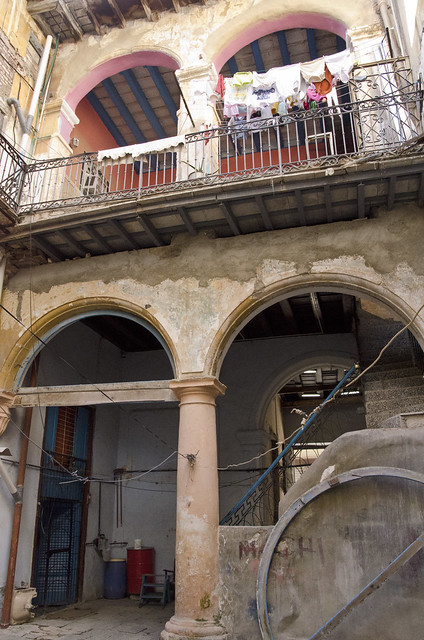
Nothing was as wounding, however, as seeing the stately late nineteenth- and early twentieth-century mansions alongside the Malecón, many of them empty and/or in utter disrepair, many of them taken over by squatters.
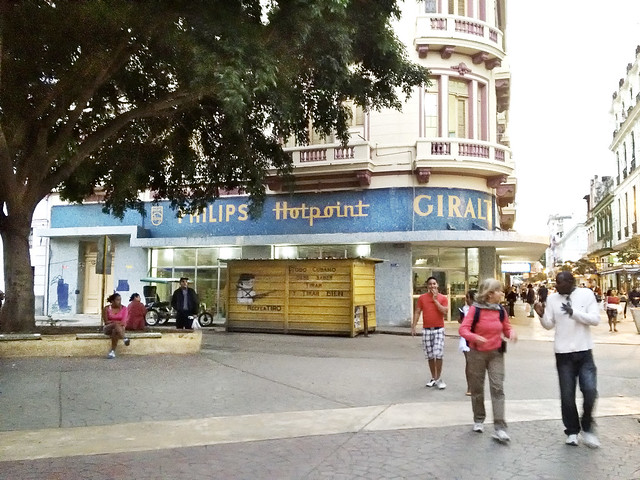
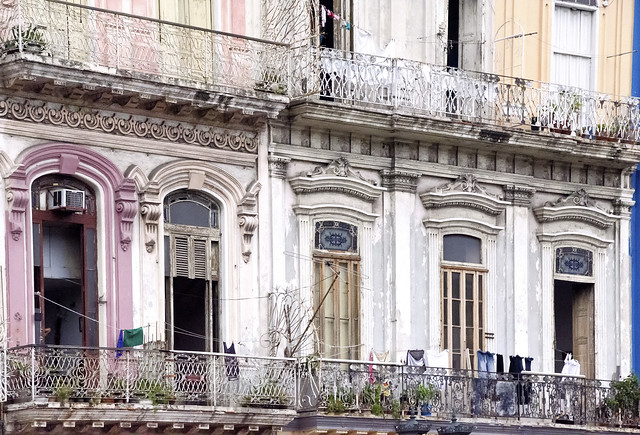
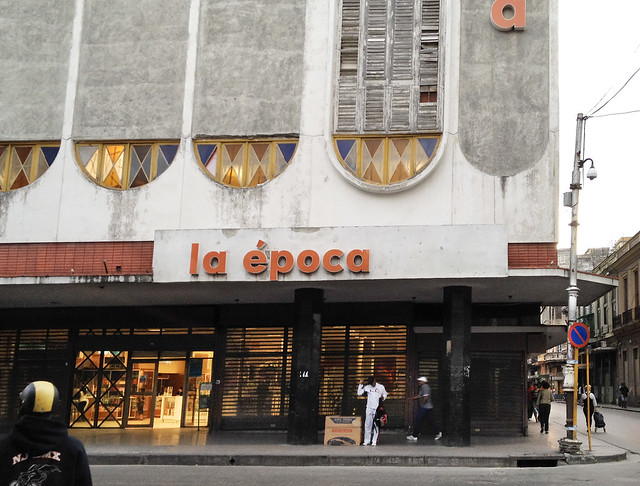
Some people in our group thought that I was depressed. And sad and depressed I truly was. But I was, and still am, exhilarated and moved by my return to Cuba. I didn’t bring back only disappointment and memories of lost youth. There was also something redemptive and glorious in it all. First and foremost: the people. I was overwhelmed by the vitality of Cubans, by their incredible sense of humor, their warmth, their continuous banter in the streets, the verbal games we engaged in. Wherever we were, once they recognized me as Cuban, as one of them, there was physical proximity, embracing, the play of words. I was their brother, their grandfather. They were my brothers, my sisters, my children, and grandchildren. I was one of them. I belonged.
Despite all the economic problems, the darkness in the city, the scarcity of goods, there were no homeless people in the streets, no children begging. The children were all in school with their color-coded uniforms that signaled their grade level. The posters and flags decorating the streets celebrated dead heroes and their ideas. José Martí and Che Guevara were omnipresent. Of Fidel and Raul there were barely any signs, except in the museums. Cubans complained constantly, but they are essentially a happy people. There was no sign of great unhappiness, of despair. Complaints were many, but often articulated in a jocular fashion.

And there was the music. Wherever we went, there was music, songs from my teens and from a period before that. Music filled with intoxicating rhythm, with Yoruba words, with African cadences. It was Cuba. It was Africa. It was the Africa that lives in Cuba, in its music, in the hybridity of its people, in the sensual bodies of dancers, swaying to the beat. On our last night in La Habana, we went to a very beautiful private restaurant, La Guarida. As we entered, there was a glimpse of a gathering ofsanteros, those who practice Santería, the African ancient beliefs in orixas. This was not done for our purpose; it was entirely unrelated to tourists. But the music was intoxicating, pulsating, and in the distance we could see people dancing, dressed in the garb of santeros, captured by the music and ancient gods. You cannot be in Cuba and not wish to dance.

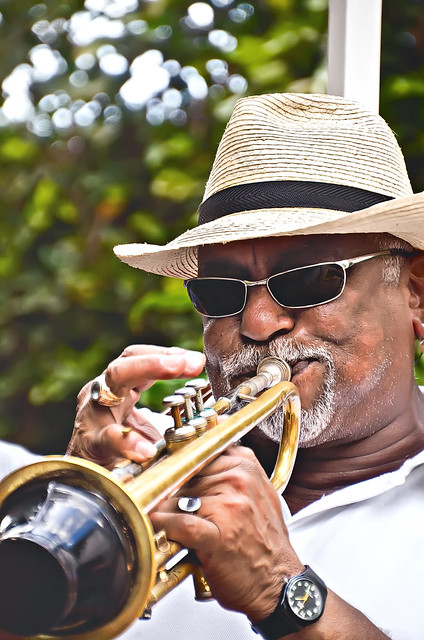
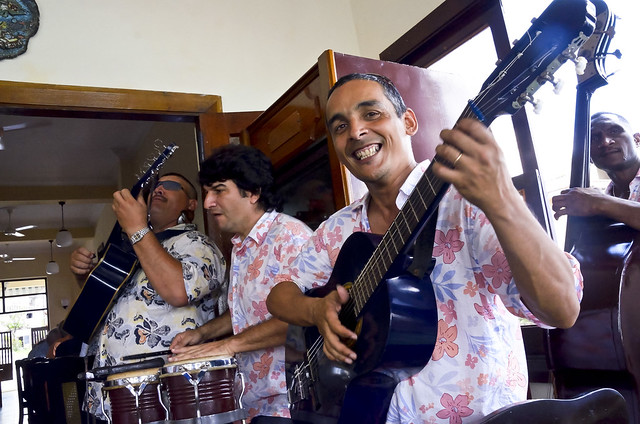
Other sights enchanted me as well. I was exhilarated by the sight of royal palms, white and green, swaying in the breeze. The relative prosperity and charm of Cienfuegos, a provincial capital, and the beauty of Trinidad, a historical town preserved from the sixteenth century, were a welcome respite from La Habana’s crumbling architecture. I was exhilarated by the intense green of the countryside. And always, first and last, by the sea. A blue, green, turquoise sea, an angry and calm sea that envelops the island like a soft glove on a graceful hand.
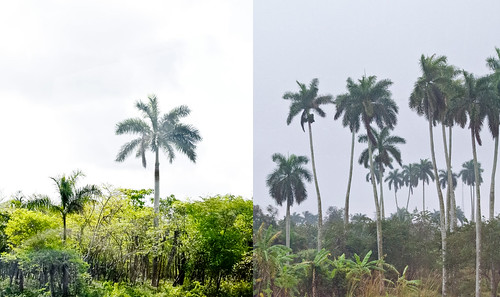
And, then, La Habana. On the next to the last day there, we went to lunch across the narrow channel that leads into La Habana’s bay. From outside the restaurant, one could see across the water the entire sweep of the city’s waterfront. The sea battered the Malecón, as a cold front blew in from the North. And there stood this city, to me magical and beautiful beyond words. There I saw the city that I had lost and now, in a fleeting moment, regained. And the shimmering beauty of the place that had once been my home was, finally, home again.
Originally published By Open Democracy

By Teofilo Ruiz
June 14th 2012
After more than half a century and many unfulfilled promises, I traveled to Cuba in late February 2012. Having left the island in October 1961, I could not (or would not) return in the early years because of threats to my freedom. Later, restrictions imposed by the Cuban government on Cubans wishing to visit the island kept me away. Finally, already old, I continually reminded myself of how much I needed to take this journey. Yet, always at the very last moment, some other voyage beckoned, and again I postponed and/or delayed the trip, even though Scarlett would remind me that it was time for both of us to travel to Cuba. If I resisted my return, it was because I fully understood the psychological impact of such a re-encounter with my lost youth, and feared the possible erasure of carefully nurtured memories of my early life, of places, people, and events.
I left Cuba close to my nineteenth birthday. I was already an adult, filled with experiences of San Francisco de Paula, my small hometown a mere ten kilometers from the center of La Habana — and of the capital city itself, the magical and enchanting La Habana of my early years. I kept a mental map, an intellectual and emotional topography of remembered places. This mental map lived in my mind, a vivid remembrance of things that were no more. In the fifty years since I left Cuba, I have walked my town and La Habana endless times, reaffirming memories of streets, houses, parks, smells, and people. And although I have lived in many different places in the world and have felt somewhat at home almost everywhere, both my hometown and La Habana remained engraved in nostalgic memories, deeply alive in me, even though part of me realized that they had no objective existence anywhere else. I dreamed of them, longed for them, and waited in vain.
During the academic year 1979-80, I lived in Madrid with my family for a year. I was there in principle to do research in Spain’s National Archives, but the real reason was to find out whether I could relocate to Europe and find a closer sense of belonging somewhere. During that year, I did not feel fully at home there either, but I read a novel by a Cuban writer, Guillermo Cabrera Infante, that had a tremendous impact on me. The novel, La Habana para un Infante Difunto (a play of words on the author’s name and the death of adolescence), evoked La Habana, precisely during the time period when I had lost the city myself. I wrote to Cabrera Infante thanking him for allowing me to recover the city. And, indeed, my reaction to thebook showed me that if I had a home, it was in La Habana.
In 1959 (partly the chronological setting of Cabrera Infante’s novel), that intoxicating first year of the Cuban revolution — intoxicating to me who identified then and still do to some extent with some of the social ideals of the revolution — La Habana was a luminous city, a city caressed by the sea, filled with color, energy, and music. It was a city where I had my first sexual experiences and where I learned to read, to think; where I was formed intellectually and emotionally. In San Francisco de Paula, living across the street from Hemingway’s house, I could see La Habana in the distance from his porch.
In La Habana there were movie houses (I saw The 400 Blows at the Rex movie house, named after the Parisian landmark), the baseball stadium, the bookstores on the streets of Obispo and O’Reilly. There were the cafes where my father often took me to hear literary discussions. I sat in silence and awe as the latest Camus novel, just arrived from Paris, was discussed; or as Lezama Lima, who wrote Cuba’s greatest novel, Paradiso, held court at those mid-day literary tertulias. La Habana was also the place of great bars, of brothels, of endless music, of santería and African rituals.
By bike or by bus, my young friends and I made our way to La Habana, where everything was exciting, where the sea breezes tempered the tropical heat. But of the life left behind, what I missed most was the banter, the rhetorical skirmishes, the physicality of La Habana and its people, the embracing of friends, old or newly met. How then to return to things that live only in memory? How to confront a reality that exists only in the mind? How to bear the psychic pain of memories completely or partly erased by the passage of more than half a century, by years of neglect?
Although Scarlett pleaded that we should go to Cuba on our own, I was not sure that I was strong enough to do so. In the end, I was offered the opportunity to represent UCLA in an Alumni trip to the island. The decision to do so proved correct. The group was pleasingly progressive and sympathetic to the plight of Cubans and understanding of what I faced and felt about my return.
Arriving on the evening of 28 February, we drove in a tour bus from the airport to a well-appointed hotel in the center of the city, right on the edge of Old La Habana and across from the former commercial center of the city in the 1940s and 1950s. The bus rode through dimly lit streets. The people on the sidewalks or crossing the streets were barely visible. They appeared, in a play of shifting shadows, like phantasmagorical figures, like ghosts. And then we arrived at the hotel, half-owned and administered by a Spanish company, a vivid reminder of the two Cubas that uneasily co-exist today. One reality: a hotel filled with Canadians, Europeans, Americans. They exchange their currency into Cuban convertible currency, eating, and drinking in La Habana, as they would in any other capital in the world. The other reality: a hotel in which all the service people — maids, security, bartenders, porters, and the like — are exclusively Cuban, many of them highly educated, working for tips in hard currency. Inside, we tourists ate as we would at home, or in Paris or London. Outside, it was a very different story. For those who have no access to the tourist economy, who function in the peso economy, there are no frills. Life is hard. When Scarlett and I walked through the Paseo del Prado for a few minutes after dinner that first night, the darkness enveloped us. A few shadowy figures sat on the benches along the nineteenth-century, once stylish promenade. I remember it as a vibrant pedestrian thoroughfare, filled with families, well lit. Businesses on the Paseo del Prado were always crowded with people. Now there was mostly darkness. Almost all the stores were closed or in ruins.
The group’s program was tightly regulated. We marched the first day through streets restored with UNESCO funds, visiting the colonial sections of the city, landmarks that I had known as parts of a living city but now had become tourist destinations. I recognized all of them, remembered all of them; yet, they belonged now to a different and transformed world, showplaces for tourists, structures turned into museums, repositories of a distant past, or of the Revolution’s achievements. We ate in pleasant restaurants, managed either by the state or by the new entrepreneurial owners of paladares, an example of Cuba’s experiment with a mixed economy. These places were open only to those with CUC’s, Cuba’s new tourist currency. Cubans were there as well, as long as they had access to CUC’s. There was, as I mentioned before, another La Habana, where you paid with pesos. That world we saw sometimes in passing, but did not experience.
These early glimpses of La Habana, disturbing and depressing, did not prepare me for the shock of seeing my hometown. After a visit to Hemingway’s house, Scarlett and I remained in San Francisco de Paula while the group went back to La Habana.
My experience of San Francisco de Paula was replicated in a lesser key on our visit to my maternal grandmother’s house, the place where my mother grew up. My cousin lives there now, and the house has been rebuilt anew. Only the location remains, a place now bereft of memories.
In retrospect, writing these pages two weeks after my return, it’s not as if all remembrances of my past were erased, though then, as I walked my town, this was precisely what I felt. Rather, I have two distinct memories: of things as they once were, and of things as they are now. These memories confront each other in uneasy relation. I dream of my past and of the present. But that day, 1 March 2012, what I desperately wanted was to leave. We took a vintage 1959 Mercedes Benz taxi back to the old part of La Habana, and the sight of the city, as we sat in a café and drank beer in the cathedral square, was soothing.
In a taxi ride from there to the restaurant in the Malecón where I was meeting the rest of the family for dinner, we traversed dark streets where, once again, ghostly figures appeared in the dim lights of the cab’s headlights. Streets where I had walked many times, streets of bustling commerce and nightlife, were shadows of their former selves.
Nothing was as wounding, however, as seeing the stately late nineteenth- and early twentieth-century mansions alongside the Malecón, many of them empty and/or in utter disrepair, many of them taken over by squatters.
Some people in our group thought that I was depressed. And sad and depressed I truly was. But I was, and still am, exhilarated and moved by my return to Cuba. I didn’t bring back only disappointment and memories of lost youth. There was also something redemptive and glorious in it all. First and foremost: the people. I was overwhelmed by the vitality of Cubans, by their incredible sense of humor, their warmth, their continuous banter in the streets, the verbal games we engaged in. Wherever we were, once they recognized me as Cuban, as one of them, there was physical proximity, embracing, the play of words. I was their brother, their grandfather. They were my brothers, my sisters, my children, and grandchildren. I was one of them. I belonged.
Despite all the economic problems, the darkness in the city, the scarcity of goods, there were no homeless people in the streets, no children begging. The children were all in school with their color-coded uniforms that signaled their grade level. The posters and flags decorating the streets celebrated dead heroes and their ideas. José Martí and Che Guevara were omnipresent. Of Fidel and Raul there were barely any signs, except in the museums. Cubans complained constantly, but they are essentially a happy people. There was no sign of great unhappiness, of despair. Complaints were many, but often articulated in a jocular fashion.
And there was the music. Wherever we went, there was music, songs from my teens and from a period before that. Music filled with intoxicating rhythm, with Yoruba words, with African cadences. It was Cuba. It was Africa. It was the Africa that lives in Cuba, in its music, in the hybridity of its people, in the sensual bodies of dancers, swaying to the beat. On our last night in La Habana, we went to a very beautiful private restaurant, La Guarida. As we entered, there was a glimpse of a gathering ofsanteros, those who practice Santería, the African ancient beliefs in orixas. This was not done for our purpose; it was entirely unrelated to tourists. But the music was intoxicating, pulsating, and in the distance we could see people dancing, dressed in the garb of santeros, captured by the music and ancient gods. You cannot be in Cuba and not wish to dance.
Other sights enchanted me as well. I was exhilarated by the sight of royal palms, white and green, swaying in the breeze. The relative prosperity and charm of Cienfuegos, a provincial capital, and the beauty of Trinidad, a historical town preserved from the sixteenth century, were a welcome respite from La Habana’s crumbling architecture. I was exhilarated by the intense green of the countryside. And always, first and last, by the sea. A blue, green, turquoise sea, an angry and calm sea that envelops the island like a soft glove on a graceful hand.
And, then, La Habana. On the next to the last day there, we went to lunch across the narrow channel that leads into La Habana’s bay. From outside the restaurant, one could see across the water the entire sweep of the city’s waterfront. The sea battered the Malecón, as a cold front blew in from the North. And there stood this city, to me magical and beautiful beyond words. There I saw the city that I had lost and now, in a fleeting moment, regained. And the shimmering beauty of the place that had once been my home was, finally, home again.
Originally published By Open Democracy